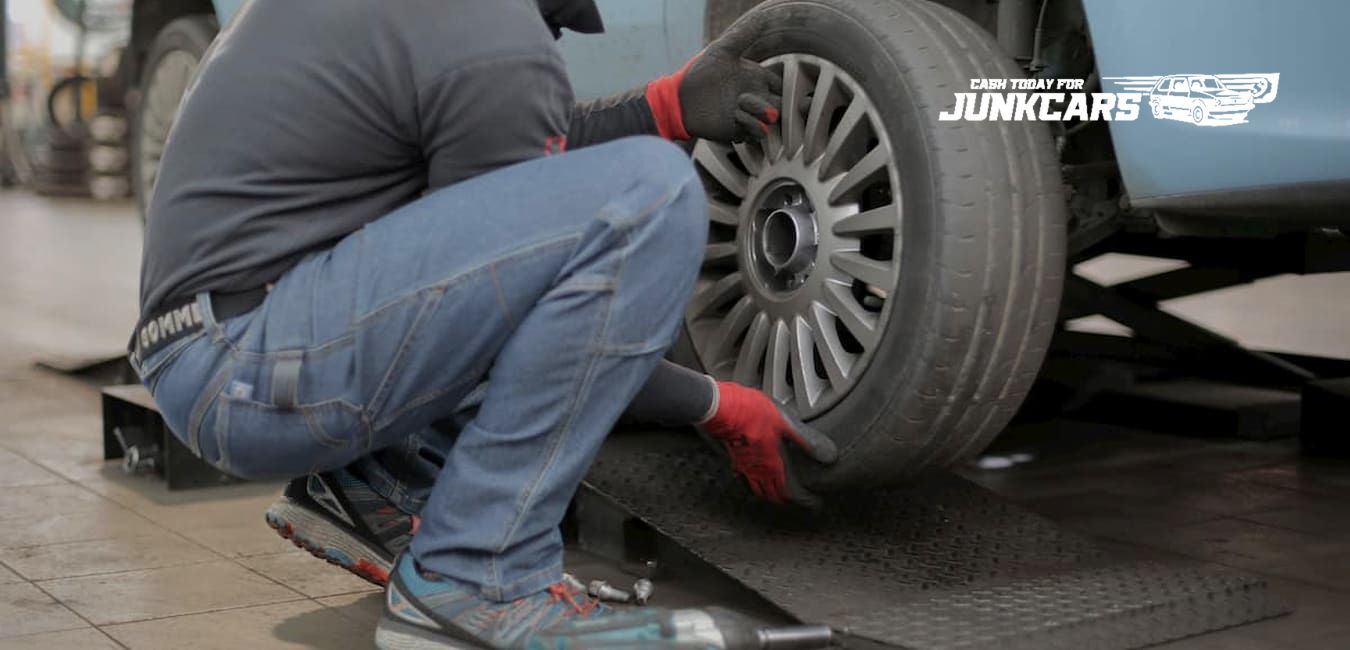Just like how one knows how to tie their shoes, knowing how to change a flat tire is just as important if not more. Getting stuck on the side of the road because of a flat tire and the inability to change one can leave you in a sticky situation. Asking strangers for help if you’re in the middle of nowhere is not an option one should consider. It’s always recommended to have the tools needed to change a tire in the boot of your car and the knowledge on how to do so.
Don’t worry, it’s not difficult. Our guide will let you in on some tools needed to change a tire and also how to change one.
Contents
All you need to know about changing a tire
Before we show you how to change a tyre, it is important to understand the tools needed to change a tire.
Tools needed to change a tire
Fortunately, cars come with a tool kit but just in case you’ve lost one or haven’t received one with your car, we recommend getting the following and keeping it in the boot of your car in case you run into a flat tire:
- Carjack
- Lug wrench
- Wheel wedges (Not necessary, however it is helpful if you’re on a slope)
- Work gloves
You can also have a handy dandy tire repair kit in case you don’t have a spare around or your spare is flat too. The tire repair kit may not be one of those tools needed to change a tire but can help with a puncture in your tire.
How to change a tire
Never learned how to change a tire? It’s nothing to be embarrassed about. Most millennials do not have basic training when it comes to diagnosing their car problems or changing a flat. Now that you are aware of the tools needed to change a tire, let’s go over how to change a tire step by step.
Before you change your tire, make sure your vehicle is in a safe place like the side of the road. If your vehicle is on a slope, use wheel wedges to stop your vehicle from moving. Wear work gloves as you may get your hands dirty in this process or even damage your skin if the weather is too cold.
- Proceed by removing the damaged tire hubcap.
- You’ll be able to see some odd shaped “screws”. They are called lug nuts. To loosen the lug nuts you need a special wrench that is commonly referred to as lug wrench.
- Place the jack on a flat ground surface under your vehicle. Make sure that when you raise the jack, it should lift the car by pushing the car’s body upwards. If the jack hits any engine part, you’ve placed it in the wrong place. Ensure the jack lifts the car up by its body.
- Once the wheel that you’re changing is half a foot above the ground, unscrew the lug nuts completely.
- As you remove the nuts, you can now remove the tire with a bit of force. Since the tyre is heavy, this might require a bit of patience. Instead of kicking the tire out (a common mistake), simply pull it slightly upwards by giving it a few tugs.
- Align the spare tire and put it in place using the lug bolts as a guidance to how your tires should fit.
- Screw in the nuts with your hands, tightening it as much as possible.
- Now lower the jack and ensure your vehicle touches the ground before you remove the jack from under the car.
- Since the nuts are already in place, don’t forget to tighten them with a lug wrench.
- Put the hubcap back on and reward yourself with a pat on the back. You deserve it.
Tips on maintaining your vehicle’s tires
It is important that your vehicle tire maintains the recommended level of pressure. Check the vehicle’s manual for what level is best for your car. Changes in tire pressure can reduce the performance of a vehicle. The drive just doesn’t feel right anymore while the tires endure a higher level of wear and tear. The next time you go fill up your vehicle’s tank, take 5 minutes out of your routine and check the tire pressures as well at the filling station. Maintaining the right tire pressure will help extend the life of your vehicle’s tires.
Always get your wheel alignment done atleast once a year. This helps in reducing thread wear on the tires. Do give your tires a quick inspection on a daily basis, it shouldn’t take more than 5 minutes. Daily tire inspection helps prevent any possible accidents on the road. Remember, it’s better to stay safe than to take a risk that you can easily avoid.


